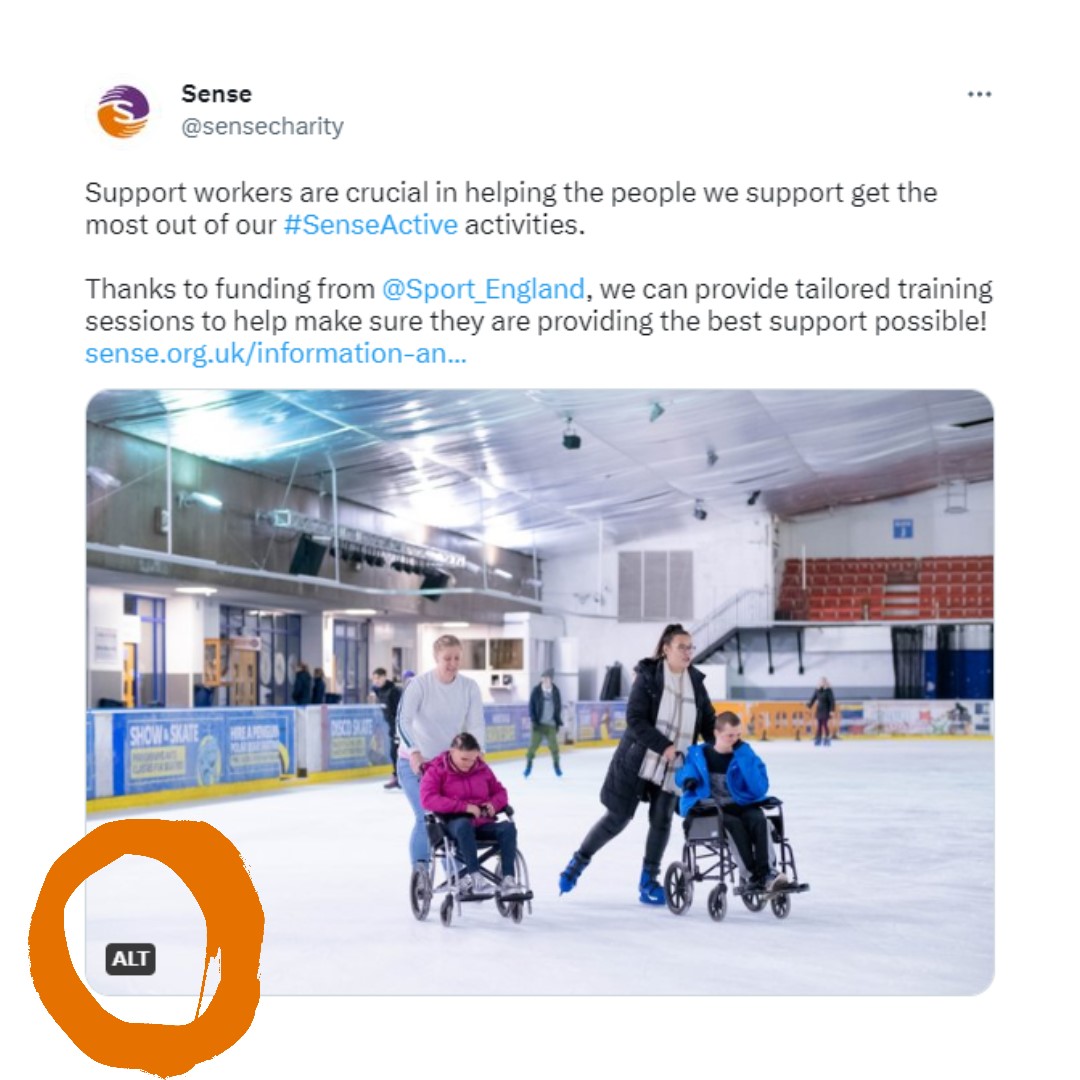Five ways to make your social media more accessible
Making social media more inclusive is easier than you think. Small changes can make a big difference for blind and/or deaf people interacting with your posts!
In this quick five-step guide, we’ll help you understand how people with visual or hearing impairments use social media, and what you can do so that your posts are accessible.
How do blind or deaf people access social media?
Disabled people will often use tools to interact with social media. Some of the most commonly used are:
Screen reader software
Also known as text-to-speech, these programmes read web pages out loud, from text to emojis and images with descriptive text.
Magnifying tools
These help people who are partially sighted by blowing up text and images.
Braille displays
Like a screen reader software, these tools take what’s on a web page, and display it on a piece of equipment that uses tiny retractable dots to display braille. Braille displays are vital communication tools for those with multi-sensory impairments, like people who are deafblind.
Five simple steps for accessible social media
Step 1: Alt text
Alt text, often called descriptive text, is what text-to-speech or text-to-braille software will read to describe images on social media. It will help the person paint a mental picture of the image you posted. Try to think how you’d describe the image if you were chatting to someone on the phone.
Most platforms will have an accessibility settings tab when posting where you can enter your alt text. You can also simply type it at the end of the body text of your post!

Remember, this function should only be used to describe what you can see in the image. It’s not the place for adding jokes, web links, or any other information that isn’t in the image. Otherwise, you’re preventing people who rely on alt text from being able to understand what’s going on.
Step 2: Subtitles
Captions are essential for people who are deaf or hard of hearing to be able to watch your videos. They’re also extremely helpful to people with learning disabilities and sensory processing disorders.
Many in-app video editors allow you to add text to your videos, and you can also download additional apps to do so (search “closed captions” on Google Play Store or Apple Store).
Not only will it make your videos more accessible, but also more engaging to those using their mobile with the sound turned off – which is up to 80% of users, according to social media platform insights!
Step 3: Voice descriptions
Consider producing a version of your video where you describe what’s seen on the screen. A quick test for this is to play the video with your eyes closed. Have you missed something because you couldn’t see? Then you might want to consider narrating.
You can also add a descriptive transcript, a text that can be read by a screen reader or screen-to-braille device.
Step 4: CamelCase hashtags
Capitalising the first letter of each word in a hashtag will help screen reading software detect multiple words. This is known as CamelCase. If not capitalised, words in a hashtag are read as if they were one long word!
For example, instead of saying #accessiblesocialmedia, use #AccessibleSocialMedia
Step 5: Use emojis sensibly
Text-to-speech software reads all elements of a web page or social media post – including emojis! Avoid long strings of emojis, or alternating each word with an emoji, to make the experience more accessible to people with visual impairments.
For the same reason, avoid emoticons (little pictures constructed using text characters, e.g.: ʕ•́ᴥ•̀ʔ).
Fancy text characters you wouldn’t find on a normal keyboard (like this 𝔢𝔵𝔞𝔪𝔭𝔩𝔢) are not simply a different font – they are scientific symbols that are used to mimic unusual text. To make your posts accessible, you should avoid using these online “fancy text generators” and use your normal keyboard instead.
